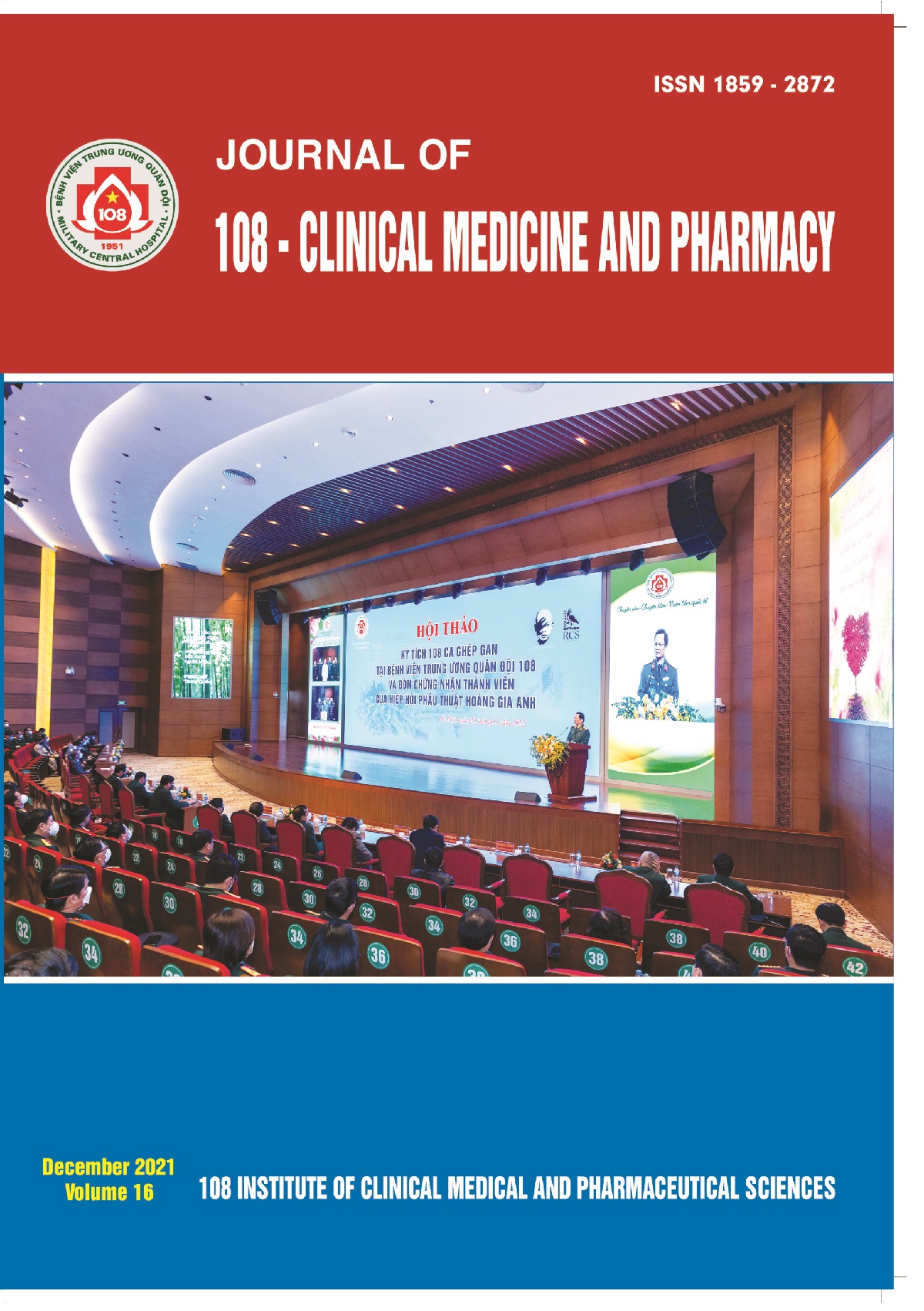To evaluate correlation of hormone receptors, Ki67 and human epidermal growth factor with other prognostic factors in invasive ductal carcinoma of breast
Main Article Content
Keywords
Tóm tắt
Objective: The objective of this study was to determine the expression of estrogen receptor (ER), progesterone receptor (PR), human epidermal growth factor (HER2), Ki67 and their correlation with other prognostic factors in invasive ductal carcinoma of breast. Subject and method: A retrospective and prospective descriptive study on 175 patients with invasive ductal carcinoma of breast at the 108 Military Central Hospital from May 2019 to September 2021. The status of ER, PR, HER2 and Ki67 expression was examined by immunochemistry. Result: The mean age of the patients was 53.3 ± 12.5 years. The common rate of 2 - 5cm tumor was (95/175) 54.3%. The percentage of cases with tumor grade 2 was the highest at (90/175) 51.4%. The expression of ER, PR, HER2, Ki67 (≥ 14%) were found positive in 53.7%, 51.4%, 33.1%, and 57.7%, respectively. We observed significant correlation between age and ER, PR, HER2 expression (p<0.05). Conclusion: None of these markers showed association with location of tumor (p>0.05). A significant correlation was observed between tumor size and ER, PR expression (p<0.05). Histological grade was related to ER, Ki67 expression (p<0.05).
Article Details
Các tài liệu tham khảo
2. Azizun-Nisa, Bhurgri Y, Raza F, Kayani N (2008) Comparison of ER, PR and HER-2/neu (C-erb B 2) reactivity pattern with histologic grade, tumor size and lymph node status in breast cancer. Asian Pac J Cancer Prev 9(4): 553-556.
3. Dang Cong Thuan, Nguyen Phuc Duy Quang (2011) The expression of ER, PR, HER2 and the serum levels of CA15-3 in invasive breaste carcinoma, Y Hoc TP. Ho Chi Minh 15(2): 107-113.
4. Dodiya H, Patel A, Patel D, Kaushal A, Vijay DG (2013) Study of hormone receptors and epidermal growth factor expression in invasive breast cancers in a cohort of Western India. Indian J Clin Biochem 28(4): 403-409.
5. Lakhani S, Ellis I, Schinitt S et al (2012) WHO classification of Tumours of the Breast, 4th ad, International Agency for Research on Cancer, Lyon.
6. Nguyen Tran Bao Song, Dang Cong Thuan (2017) Study on molecular classification in breast carcinoma by immunohistochemistry and insitu hybridization. Vietnam Medical Journal 461: 309-318.
7. Nguyen Van Chu (2016) Studying application of molecular classification in breast cancer by immunohistochemical method. Doctoral Thesis in Medicine, Hanoi Medical University.
8. Pajenga E, Rexha T, Çeliku S, Ugrinska A, Bejtja G (2016) Hormonal receptor, human epidermal growth factor and its association with breast cancer tumor characteristics in Albania. Cent Eur J Public Health 24(3): 171-175.
9. Siadati S, Sharbatdaran M, Nikbakhsh N, Ghaemian N (2015) Correlation of ER, PR and HER-2/Neu with other prognostic factors in infiltrating ductal carcinoma of breast. Iran J Pathol 10(3): 221-226.
10. Ta Van To (2004) Research on morphology, immunohistochemistry and their prognostic value in breast carcinoma. Doctoral thesis of Medicine, Hanoi Medical University.
 ISSN: 1859 - 2872
ISSN: 1859 - 2872
